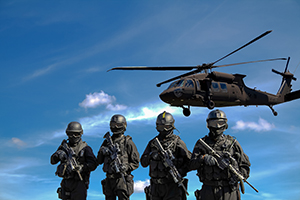Secretary of Defense Ashton Carter on Dec. 3 ordered the military to open all direct combat positions to women, giving the services 30 days to submit their plans for the historic change.
“There will be no exemptions,” Carter said during a press briefing. “To succeed in our mission of national defense, we cannot afford to cut ourselves off from half the country’s talents and skills. We have to take full advantage of every individual who can meet our standards.”
Carter’s decision effectively opens up the final 10 percent of military positions (about 220,000) to women, allowing them to serve in any and all direct combat jobs, from infantry rifleman to special operations forces such as the Army Delta Force and the Navy SEALs.
The secretary’s announcement was not unexpected. He had hinted at it for months, even telling U.S. troops participating in NATO exercises in Europe in October that limiting his search for qualified military candidates to just half the population would be “crazy.”
 |
Of all the services, only the Marine Corps sought any exceptions in removing the ban on allowing women to serve in combat jobs. Gen. Joseph Dunford, former Marine Corps Commandant and now chairman of the Joint Chiefs of Staff, cited studies showing mixed-gender units aren’t as capable as all-male units. Carter said he came to a different conclusion, but he said the integration of women into combat jobs will be deliberate and methodical and will address the Marine Corps’ concerns.
Although Dunford did not attend the press conference announcing the change, Carter told reporters the chairman “will be a full part of implementation.”
Carter acknowledged that, on average, men and women have different physical abilities, but insisted the services must assign duties based on ability, not gender. Although this likely would result in a smaller proportion of women in some jobs, he said, equal opportunity does not necessarily mean equal participation. He added that combat effectiveness remained his main goal and that there would be no quotas for women in any jobs.
But some military advocates believe such “gender neutral” standards gradually will erode against the constant push for “gender diversity metrics.”
“That was the phrase used in the … Military Leadership Diversity Commission (MLDC) report in 2011,” said Elaine Donnelly, president of the Center for Military Readiness and a member of President George H. W. Bush’s 1992 Commission on the Assignment of Women in the Armed Forces. “The word metrics is just a synonym for quota,” she added.
Donnelly said the Pentagon has fully endorsed the congressionally-mandated MLDC report, which recommended combat jobs be opened to women on the basis of diversity and equal opportunity. But she believes attempts to keep standards for men and women exactly the same are essentially impossible, especially given the documented higher injury rates for women.
“If we know that they suffer injuries at the rate double those of men, well the only solution is to lower the standard to avoid those injuries,” Donnelly said. “And the more you do that – you don’t announce it to the media, you don’t even admit it – you say well I’m meeting the same standard. But the word that is left out is ‘minimum.’”
The removal of any direct ground combat exclusions for women does not imply combat assignments would be optional for them, such as volunteering for elite units like the Army Rangers. Female recruits could now be ordered to serve “in your regular infantry battalions, units that women really don’t want to go into,” said Donnelly. “They have to follow orders just like the men. And they would have to in the future.”
